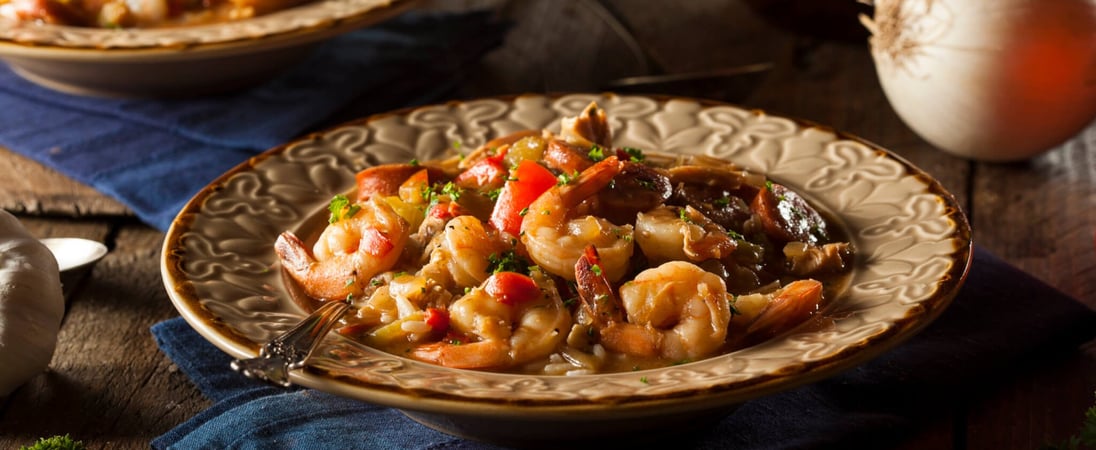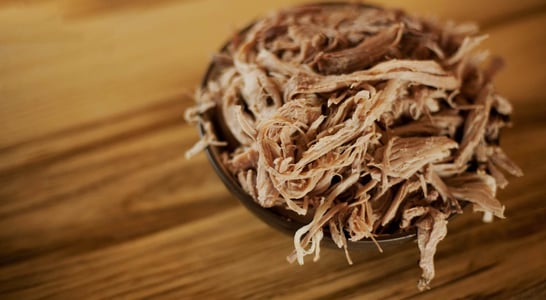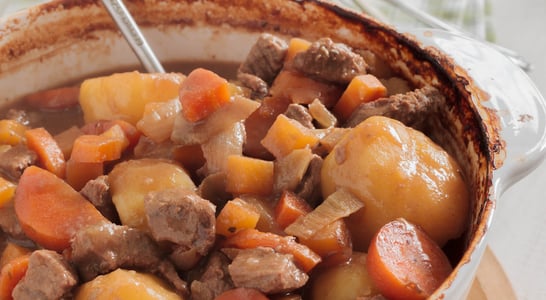
National Gumbo Day
Learn more about the flavors that are all wrapped up in this one little dish that hails from the cultures of Africa, France and the United States. It’s time for National Gumbo Day!
History of National Gumbo Day
While many think that everything coming from New Orleans has a French influence, that’s not necessarily the case with gumbo.
With roots in African culture, the dish called gumbo offers a unique, spicy flavor that offers a delicious foray into Southern, Cajun cooking.
Gumbo seems to have originated in the 18th century after the slave trade meant a significant portion of the population of New Orleans had arrived from West Africa. In fact, research suggests that it is through the West African culture that okra based stews were made, eventually evolving into the dish that is now known as “gumbo”.
The name for gumbo is a bit contested, but some historians believe that it came from an African term “kombo” or “ki ngombo” which means okra. But others think it might have been related to the French population that was also located in New Orleans, perhaps something like “un gombeau”.
National Gumbo Day was founded to celebrate everything related to this delicious dish that has roots in West Africa as well as French-occupied New Orleans. It’s a combination of spicy Cajun or Creole flavors as well as shrimp, andouille sausage, vegetables – with okra being a classic ingredient.
It’s time to learn about this dish and enjoy National Gumbo Day!
How to Celebrate National Gumbo Day
Have fun participating with National Gumbo Day with some of these ideas for celebrating the day:
Learn How to Make Gumbo
Grab some vegetables, and andouille sausage and throw them together to cook in some butter.
Add Cajun seasonings and chicken broth, then allow the combination to simmer for about an hour so that the flavors have a chance to meld together. Add the shrimp to the pot for the last few minutes and then serve on top of white rice.
Head to New Orleans
Since this is the place where gumbo was created, a visit to Louisiana is the perfect way to enjoy and celebrate National Gumbo Day!
Located near the Gulf of Mexico on the Mississippi River, New Orleans is known not only for its delicious cuisine but also for its nightlife, history and round-the-clock jazz music. Of course, while visiting this city known as “The Big Easy”, it is certainly recommended to order up a dish filled with amazing local gumbo!
Learn Fun Facts About Gumbo
One clever way to celebrate National Gumbo Day is to impress friends, family members and coworkers with bits of trivia and knowledge related to the dish of the day. Start with some of these interesting facts about gumbo:
-
The first cookbook to include a recipe for gumbo was The Virginia Housewife by Mary Randolph in 1824.
-
In 2018, a Los Angeles based chef set the world record for the largest ever pot of seafood gumbo, made at the Walk-On’s Independence Bowl. The record was set at 6500 pounds of seafood gumbo.
-
Gumbo is cooked for a minimum of three hours but often simmers all day.
National Gumbo Day FAQs
Did gumbo exist before Louisiana was part of the U.S.?
Yes! Gumbo predates Louisiana’s statehood (1812). French, Spanish, West African, and Native American influences shaped it in the 1700s.
Early versions used filé powder (ground sassafras leaves) as a thickener, borrowed from the Choctaw people.
Enslaved Africans brought okra, which became another key ingredient. Gumbo evolved with regional twists long before becoming a Louisiana icon.
What’s the weirdest ingredient ever used in gumbo?
Squirrel! In some rural Louisiana communities, people historically made “woods gumbo” with whatever they hunted—squirrel, rabbit, even raccoon.
Some Creole cookbooks mention snapping turtle gumbo as well. These versions are rare today but reflect gumbo’s resourceful roots.
Do other countries have dishes similar to gumbo?
Yes! West African okra stews like Ghanaian kontomire and Nigerian ogbono have a thick, rich base.
In France, bouillabaisse shares gumbo’s seafood-and-broth foundation. In Brazil, caruru combines okra, dried shrimp, and dende oil, resembling Creole gumbo.
What’s the biggest gumbo ever made?
In 2015, chefs in New Iberia, Louisiana, cooked a 5,000-pound gumbo in a 10-foot-wide pot.
They used 300 pounds of onions, 150 pounds of bell peppers, and 500 pounds of shrimp! The Guinness World Record, however, goes to a 6,800-pound gumbo made in Alabama in 2019.
Is there a “gumbo war” in Louisiana?
Absolutely! The debate over roux vs. filé vs. okra is fierce. Some say a true Cajun gumbo must have a dark roux, while Creole cooks argue for tomatoes. Seafood or chicken-and-sausage? Opinions divide families!
What’s a “gumbo ya-ya”?
The phrase “gumbo ya-ya” means “everybody talking at once.” It’s Creole slang for lively conversation, like a stew of voices. Author Lyle Saxon popularized it in his 1945 book Gumbo Ya-Ya: Folk Tales of Louisiana.
Has gumbo ever been political?
Yes! In 1979, Louisiana Governor Edwin Edwards served gumbo to diplomats in Washington, D.C., to promote state culture.
Even earlier, during the 1800s, Creole leaders used gumbo as a symbol of cultural blending in political speeches.
Can gumbo really “cure” a cold?
Some swear by it! Spicy gumbo can clear sinuses, and bone broth from slow-cooked meats boosts immunity. Okra is rich in vitamin C, and garlic fights infections. It’s not a medical cure, but it helps!
How did gumbo become Louisiana’s official state dish?
In 2004, Louisiana lawmakers voted to make gumbo the state dish. The resolution highlighted its multicultural roots and economic impact. Festivals, cook-offs, and restaurants make gumbo a major tourism draw.
Do astronauts eat gumbo in space?
Yes! In 2007, Louisiana-born astronaut Shannon Lucid requested gumbo on the International Space Station. NASA modified the recipe to reduce crumbs and floating spices. It’s one of the few Cajun dishes eaten in orbit!
Also on ...
View all holidaysNational Farmers Day
Without farmers, we’d all starve. Visit a farmer’s market, take a trip to a farm, or reenact how farmers used to live and grow with old-fashioned tools.
National Pulled Pork Day
Gather friends and family and make pulled pork together, a delicious and filling cut of meat is sure to please, or go out and enjoy professionally made pulled pork.
We think you may also like...
Global Scouse Day
A cherished culinary tradition, warm and hearty, born from the heart of a vibrant city, nourishing body and soul through generations.








